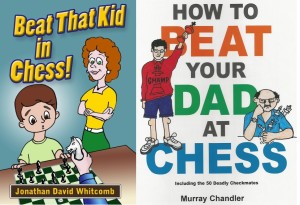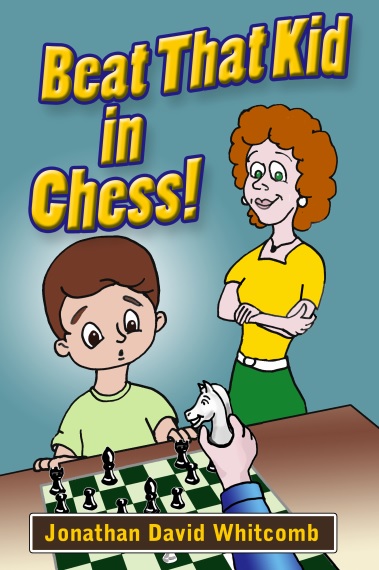The following five chess books were chosen, for this review, not for head-to-head competition but for comparing different skill levels of chess players. Each of these books may be among the best ones for each level.
- Chess for Children – for the totally ignorant child – very popular
- Beat That Kid in Chess – for the raw beginner (whatever age)
- 1001 Chess Exercises for Beginners – not so easy for novices
- Chess Tactics for Kids – for the post-beginner (all ages)
- How to Beat Your Dad at Chess – even if you’re an orphan
How is any publication a “best chess book?” That’s too deep a subject to cover well in this post. What does the reader want from the book? That’s easier to answer. Whatever the reader knows before picking up the book, whatever that person’s skill in chess—that plays a big part in what he or she wants to get from it.
We’ll start at the bottom: the child who knows nothing about the rules of the royal game. We’ll then move up to the player who knows almost nothing except the rules. We’ll continue until we arrive with a competitor who has performed at the equivalent of an average level for an average chess tournament.
____________________________________________________________
____________________________________________________________
Chess for Children
This looks like the only chess book, among these five, that has a title that closely relates to who it’s for. But even on that score, the title would have been more informative with “Chess for Small Children.” It really is for small kids, a book that a twelve-year-old would be embarrassed to be seen reading.
With that said, Chess for Children now appears to be the most popular publication of its kind on Amazon, and that says a lot considering about 100,000 books may have been written on chess. Its playful cartoon images may delight small children, and the rules of the game are laid out clearly and simply.
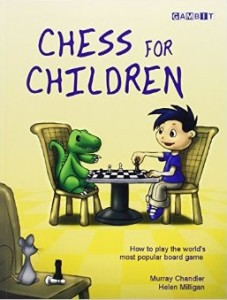
One Amazon reader-reviewer has said, “I have seen countless books on chess aimed at youngsters over the years, but this is probably the nicest introduction I have ever seen . . .” Be aware, however, that this chess book has many pages devoted to just teaching the rules, so it’s best for the young child who wants to learn how to play. For little kids who already know the rules, other books could be a better choice.
____________________________________________________________
Beat That Kid in Chess
This could be the best chess book for the early beginner, the person who already plays the game but just wants to win, or at least to win more often. It uses a new method of chess instruction: nearly-identical positions (NIP). This is to teach the novice to see a position more like an advanced player would see it, evaluating the possibilities with precision. The goal is to save the reader from the embarrassment of losing a dozen games or so against other novices, while learning the principles that are taught in Beat That Kid in Chess.
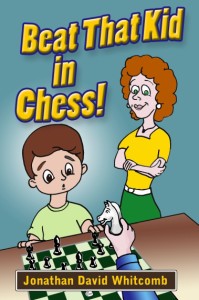
You might be mislead by the cover. This book is not filled with cartoons for little children. In fact the reading level is more for teenager and adults, perhaps for older children as well. Like other chess books here examined, the title relates to marketing: It’s to train you in defeating any beginner of any age.
____________________________________________________________
1001 Chess Exercises for Beginners
This chess book appears better for the advanced beginner rather than the early beginner. One Amazon reader-reviewer said, “This . . . simply fails to deliver. Although it was ostensibly written for beginners, only the first three chapters . . . are suitable for that audience. The remainder of the book is too advanced for the true beginner.”
Nevertheless, this chess book is about tactics and that’s dearly needed for the advanced-beginner and the intermediate player.
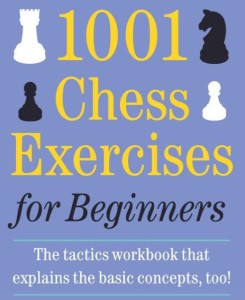
1001 Chess Exercises for Beginners
This may be better for the reader who has already mastered the concepts in the previously reviewed book (Beat That Kid in Chess).
____________________________________________________________
Chess Tactics for Kids
The grandmaster Murray Chandler has another successful title with Chess Tactics for Kids. It has “50 tricky tactics to outwit your opponent,” although that subtitle appears more like something a non-chess-playing editor or publisher might have chosen. Grandmasters probably use words like “defeat” or “win” rather than “outwit.” Regardless of that detail, this may be the best chess book for the intermediate level tournament player or average chess-club member.
Be aware that this is not the best book for a raw beginner. In addition, the title may be misleading, perhaps even more so than is the title of Beat That Kid in Chess. The concepts in Chess Tactics for Kids may be grasped by older children and by a few very young prodigies, but the reading level is beyond that of many children. Barnes & Noble says “10 to 13 years” old.

“Tricky Tactic 24” is noteworthy, not found in many chess books. This tactic the author calls “desperado sacrifice.” It may be well known to class-A players and experts, but this can be important for lower-rated tournament competitors to learn.
____________________________________________________________
How to Beat Your Dad at Chess
This chess book is similar to another one written by Murray Chandler: Chess Tactics for Kids. These two hardbacks are similar in content, but complementary, and they’re about the same length. But How to Beat Your Dad at Chess is devoted almost entirely to checkmates, a very important but narrow focus.
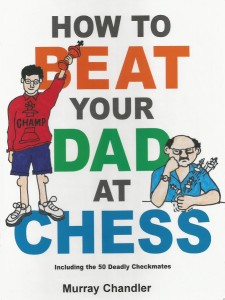
How to Beat Your Dad at Chess is not really about putting your father in his place. It can be useful for many players who have been too-often defeated by a competitor of any relationship or non-relationship. This chess book, however, is not for the raw beginner and it can be too daunting for the advanced beginner as well. It may be most useful to the average tournament player.
____________________________________________________________
Whether purchased for a gift or for yourself, these five chess books are worth considering.
###
.
If you know the chess rules but almost nothing about how to win, this book is for you.
Four Chess Books for Beginners
A brief search on Amazon, for chess books, can give one the impression that there’s an unlimited number of them, including publications for novices.
- How to Beat Your Dad at Chess
- Beat That Kid in Chess
- Chess Tactics for Kids
Lessons for the novice to learn online
Different levels, with a variety of concepts (online)
.





